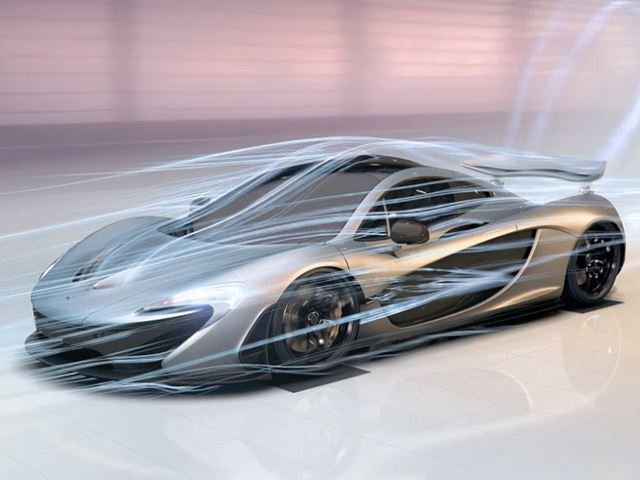Evolution of Aerodynamics: Origins of the First Supercars

Car design had also evolved because automakers found it impractical to put engines in the back, meaning that the front ends of cars needed to be large to accommodate the engine. As a result, aerodynamic efficiency wasn’t too high on the list of priorities for automakers, but thanks to the world of racing, this did not halt the process entirely.
Headway in the world of aerodynamics was being made one lap at a time on racetracks across the world. As competition heated up between racing teams, race cars began to make their way into wind tunnels in order to see what advantages could be carved out of the metal bodies. To better understand how a car interacts with the wind, a value called the “drag coefficient,” or Cd, is used to quantify how much resistance an object encounters when traveling through the air. A perfectly flat board held perpendicular to the wind would have a Cd of 1, meaning it encounters a lot of resistance. For reference, the wind-friendly Tesla Model S has a Cd of 0.24 while a Hummer H2 has a fuel hungry Cd of 0.57.

Racing engineers of the 1930’s and 40’s used wind tunnels to make their cars have low Cds so that they weren't slowed by the wind. Unfortunately, they learned the hard way that a low Cd is not everything once a car gets up to speed. When a car is moving fast, it begins to experience downforce or lift depending on the design of the body. Lift is bad because it lessens driver control and can make a car fly off the ground completely. Downforce is what a racing driver wants since it has the ability to increase grip and control. This discovery was pivotal for automotive aerodynamics because engineers learned that wind resistance could be used to increase performance and did not need to be avoided entirely.

It wasn’t until the 1960’s that the first attempts at increasing Cd in exchange for downforce were made on racing cars. These came in the form of rear wings (not to be confused with spoilers, which improve airflow around a car rather than produce drag and downforce for better cornering), which are basically upside down airplane wings that push the rear of the car into the pavement and increase grip. Soon, wings weren’t the only parts of a racecar that were built for downforce; the entire car was crafted to act like a wing and get downforce on both the front and the rear of the car. Modern racecars now depend entirely on downforce to keep them on the track when undergoing hard cornering at speed.
The Cd value of a modern F1 car is about 0.70, making even the Hummer look like a ballerina in the wind. While pesky F1 rules keep racing engineers from creating cars with moving parts to make them freakishly agile in the wind, supercar manufacturers don’t have their hands tied. The result is the addition of active aerodynamics on high-end performance cars like the McLaren P1. The most basic active aero systems are rear wings that adjust their angles to have low drag on straights and then tilt to increase downforce under braking and cornering. Cars like the Ferrari LaFerrari and the Pagani Huayra combine active rear wings with moveable panels under the car or on the hood.

These give the car much more stability when cornering and then getting out of the air’s way on full throttle straights. The trend of automotive evolution has shown us that pioneering technology that appears on the highest of car royalty eventually trickles down to the common people mover. For the sake of all things fast and enthralling, let us hope this happens soon.







Related News


